Ancient Egypt: The Old Kingdom
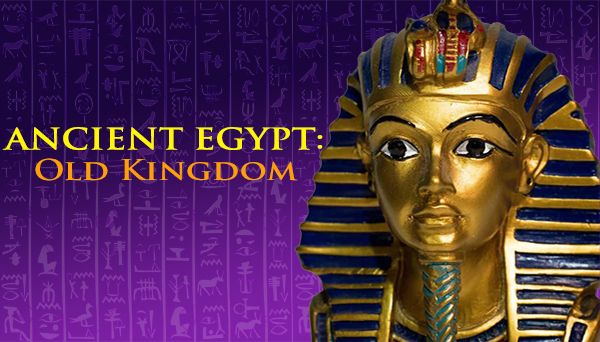
The Nile was the source of all life in Egypt. It had what no other water body had at that time, predictability in flooding. The Ancient Egyptians used a basin irrigation system which easily watered their crops and kept the soil fertile with plenty of nutrients and minerals. This meant that the Egyptians could grow more with less, which allowed them a huge surplus of food to aid their growth and trade. With less manpower and resources dedicated to farming, Ancient Egyptians had more time to focus on art, technology and construction.
The Rise of Central Administration
In a unified Egypt, a new class of citizens came to power, these were the scribes and state officials. They were tasked with coordinating the harvest and its seasons, collecting taxes, recording history and drafting workers into construction projects. It was only 2650BC but the Egyptians in the Old Kingdom demonstrated a very high level of administration and power centralization, they also completed great & wonderous feats, some of which we are still not sure about how they accomplished. The most famous are the Pyramids of Giza and the Great Sphinx built around 2550BC.
.jpg)
Figure 1: Djoser's Pyramid was the first structure of its kind (Built around 2660BC)
From the moment Ancient Egyptians were born, they obsessed about one thing and one thing only:
their death.
King Djoser wanted to eternalize his soul and wanted a bigger and more significant structure as his tomb, so he constructed the first Step Pyramid ever with the help of a great architect called Imhotep. King Djoser was buried underneath his step pyramid upon his death, but the dream of grand monuments did not die with him.
Along came King Snefru, Djoser's son, who wanted to surpass his father's legacy more than anything else. Snefru tried imitating the step pyramid but only failed as the structure was not built on stable ground, the Meidum (called false pyramid by Egyptians) was the last of its kind. Next, he tried building yet another pyramid, constraining Egypt's resources and manpower even further only to fail yet again as he built the pyramid with such a steep angle that destabilized the structure and forced him to reduce the angle halfway through construction, the result was the Bent Pyramid depicted below.
(Note: Step pyramids are not considered to be "true" pyramids.)
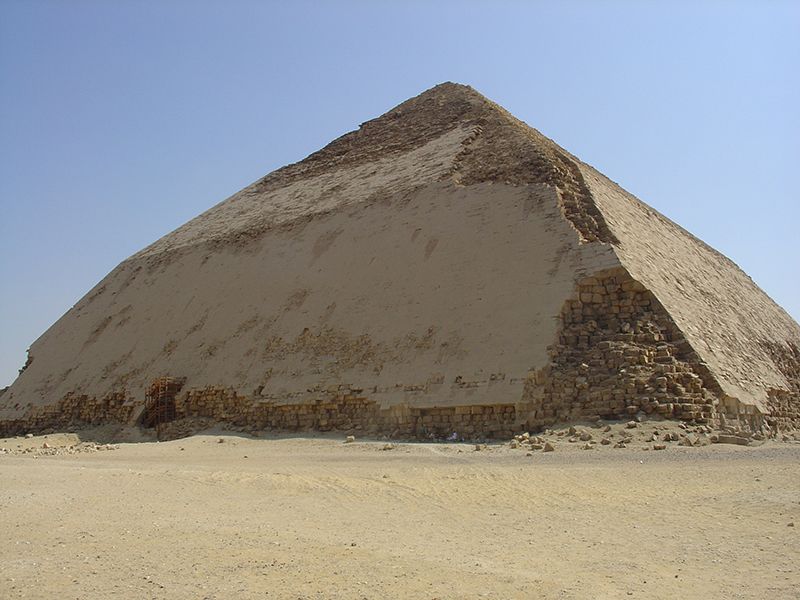
Figure 2: The Bent Pyramid, built by Snefru around 2600BC
The Quest for Eternity
Egyptian Pharaohs of The Old Kingdom continued their quest for power and eternity. Each dreamed of building a grander and bigger pyramid than any king before them. It was in the reign of king Khufu that the Great Pyramid of Giza was built. It remained the tallest structure in the world for about 4,000 years!
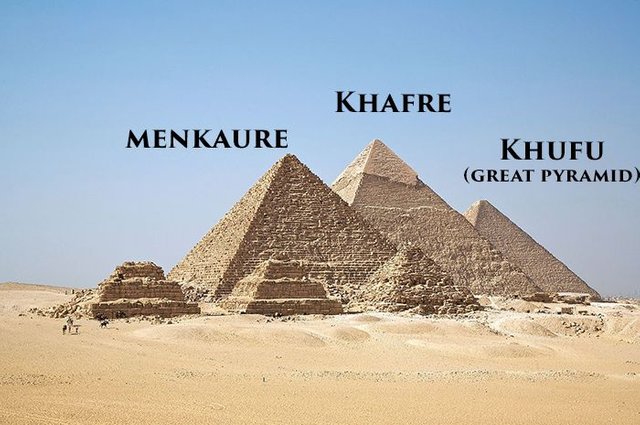
Figure 3: The Giza Pyramids Complex
Then came King Khafre who built the Pyramid of Khafre next to Khufu, he also constructed the Great Sphinx depicted below. The last and smallest pyramid of the Complex of Giza was built to honour the Pharaoh Menkaure. All pharaohs were buried in their respected temples upon death with many golden ornaments, their belongings and sometimes their mummified pets! It was believed that the King would rise again to join the afterlife and was going to need all these worldly things.
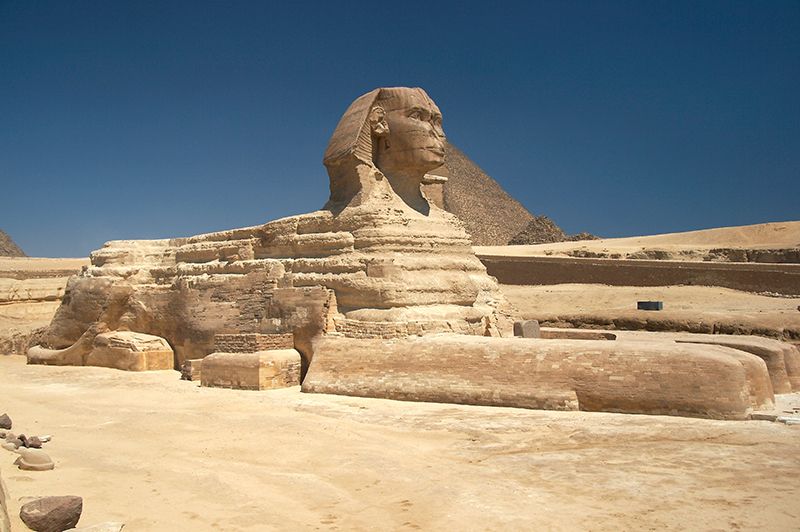
Figure 4: The Great Sphinx at Giza
The First Intermediary Period
Pharaohs gave lands and resources to temples, scribes and state officials as payment for their services and its continuation even after a pharaoh's death. After about 500 years of this practice, Egypt's economy started to deteriorate, this in addition to severe droughts led to civil unrest and the diminishing of the pharaoh's power which ushered in a period of instability called the First Intermediary Period lasting for more than 100 years. Civil wars, famine and ambitious governors caused Egypt to plunge back into darkness, ending the union and splitting the country back into Upper and Lower Egypt.
How will Egypt endure and rise again from this crisis?
Fun Fact: Snefru introduced coating the pyramids outer structure with polished, white limestone to make them more shiny and durable. Over time this of course eroded away and lost its luster.
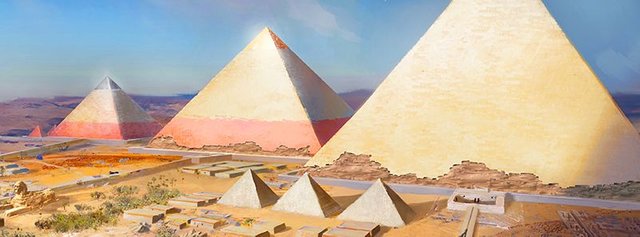
Figure 5: White Pyramids of Giza with limestone coating.
Stay Tuned!
Next stop: The Middle Kingdom


I am huge history & geography geek and I want to bring you some entertainment and hopefully education, through creating content about topics I am very passionate about.
Sources
- https://en.wikipedia.org/wiki/Ancient_Egypt/
- http://www.history.com/topics/ancient-history/ancient-egypt/
- https://www.ancient.eu/egypt/
- https://www.livescience.com/55578-egyptian-civilization.html/
- Personal Studies & Knowledge
- Figure 1, Source
- Figure 2, Source
- Figure 3, Source
- Figure 4, Source
- Figure 5, Source

You received a 10.0% upvote since you are not yet a member of geopolis and wrote in the category of "history".
To read more about us and what we do, click here.
https://steemit.com/geopolis/@geopolis/geopolis-the-community-for-global-sciences-update-4
If you do not want us to upvote and comment on your posts concerning earth and earth sciences, please reply stop to this comment and we will no longer bother you with our love ❤️